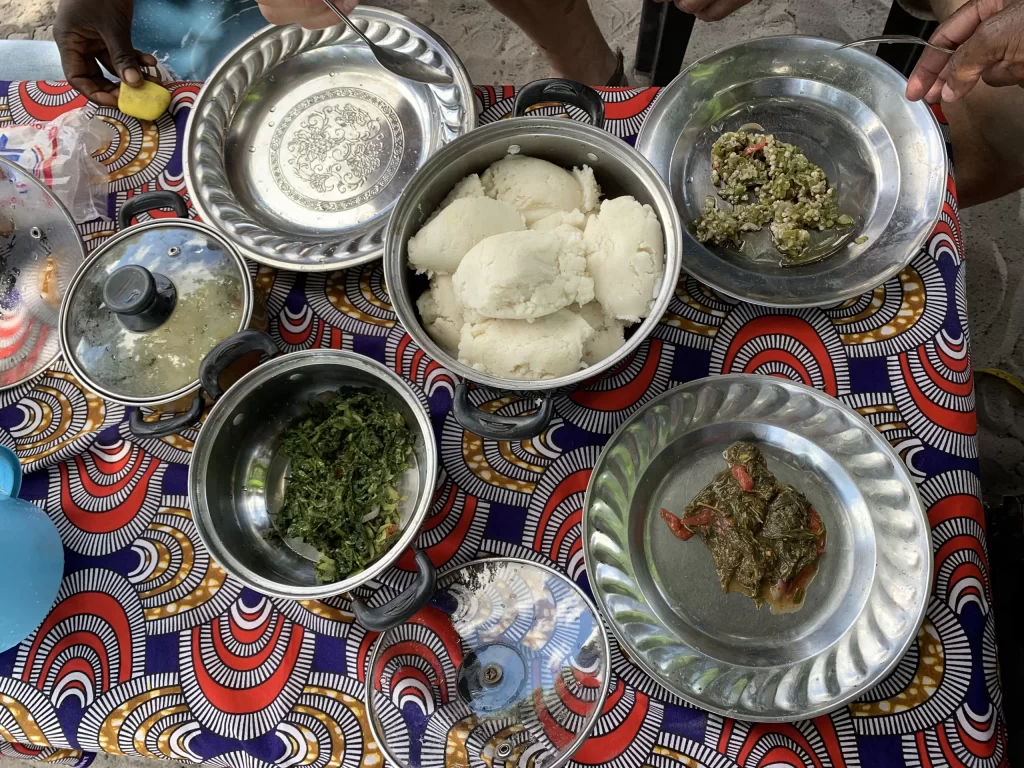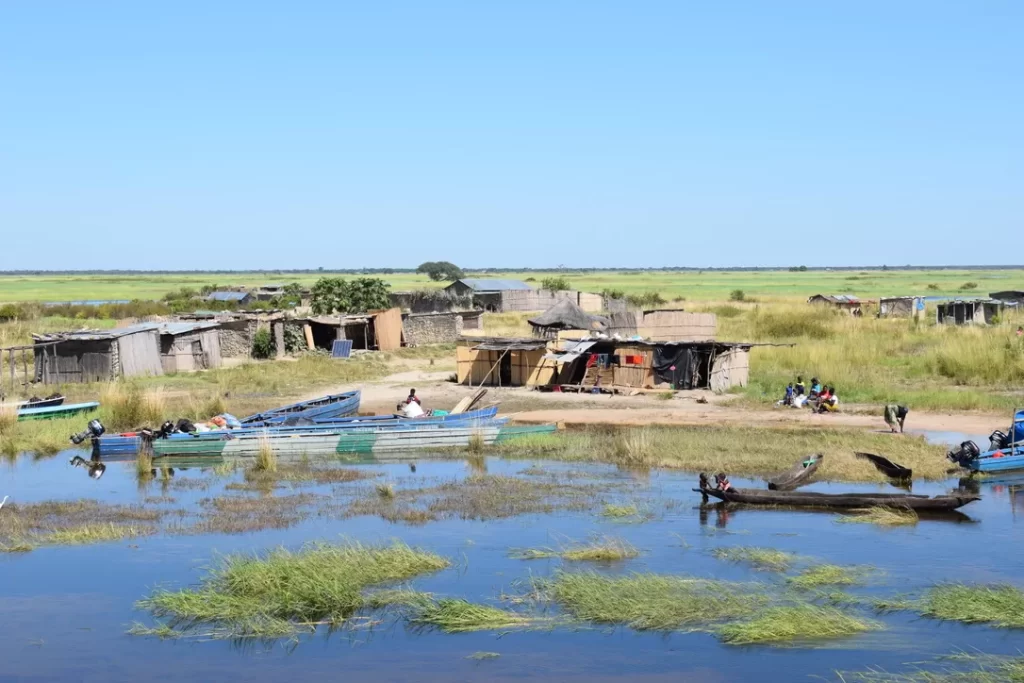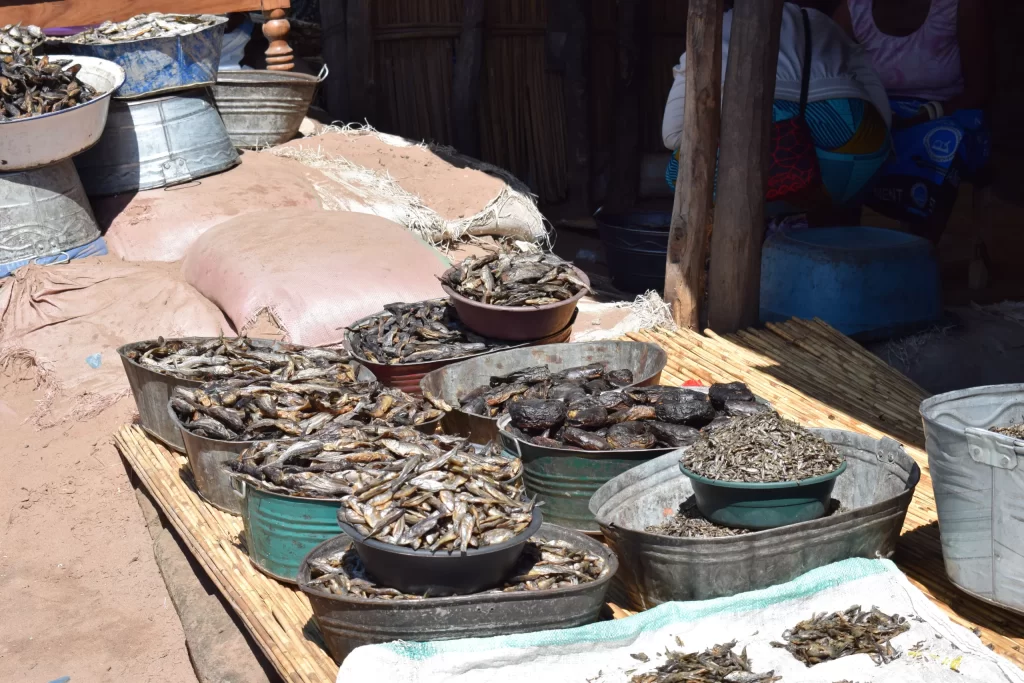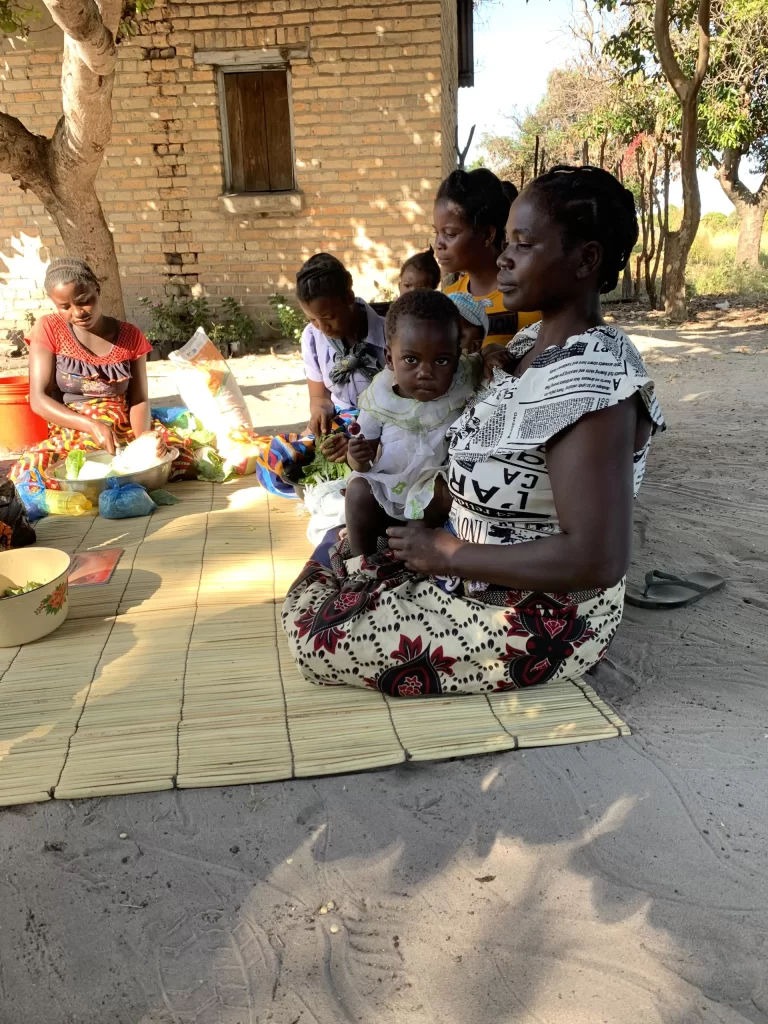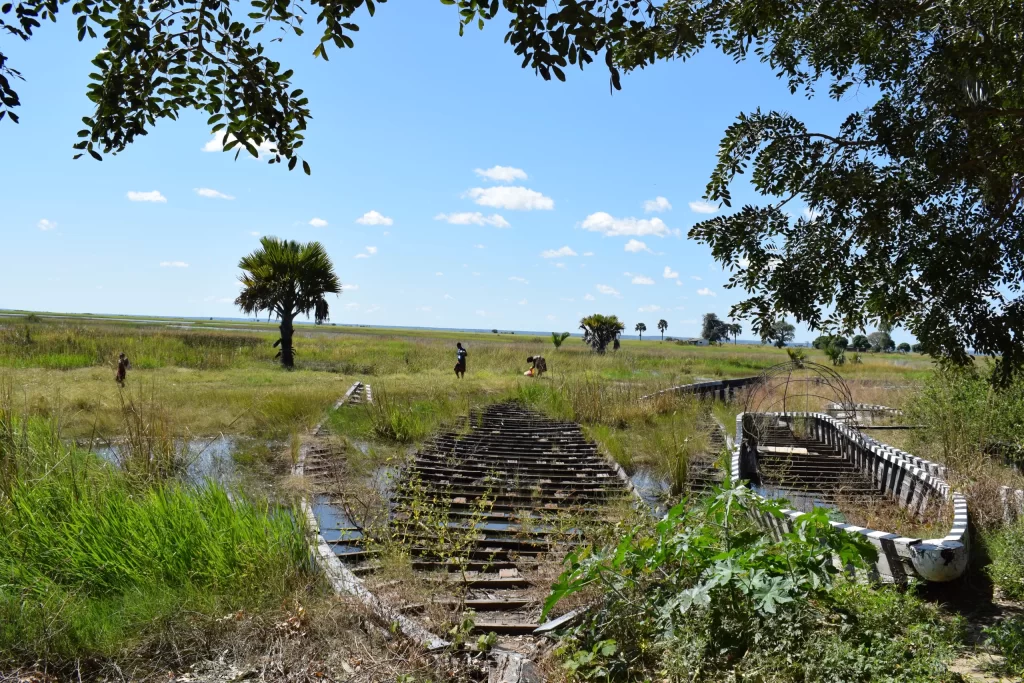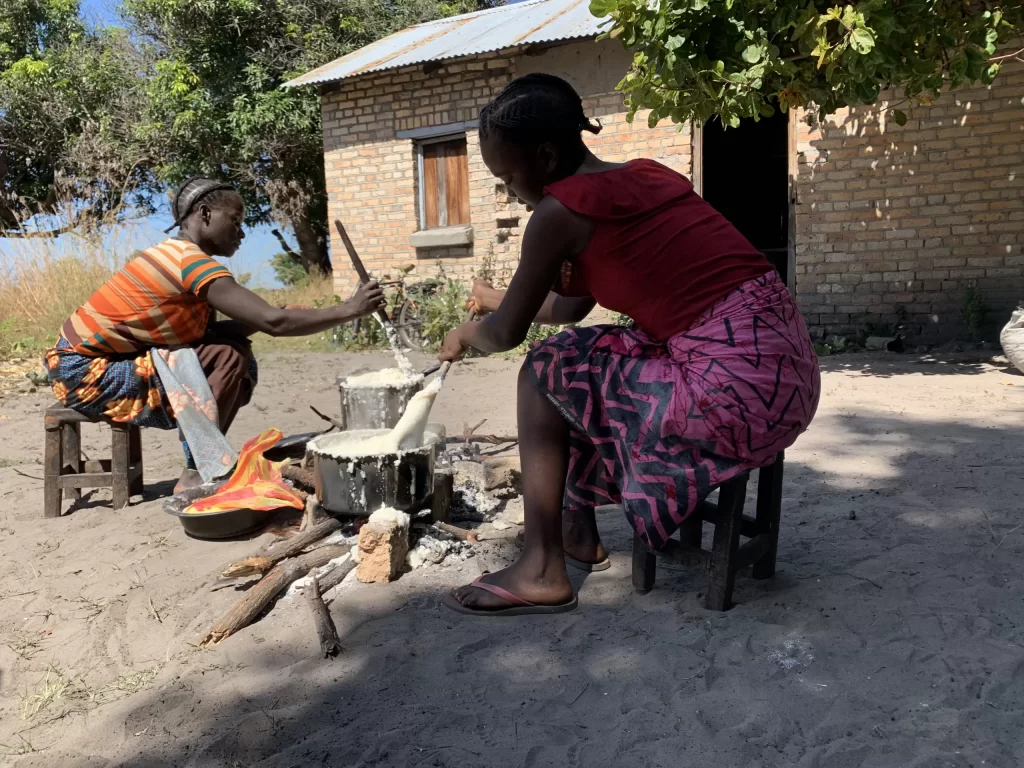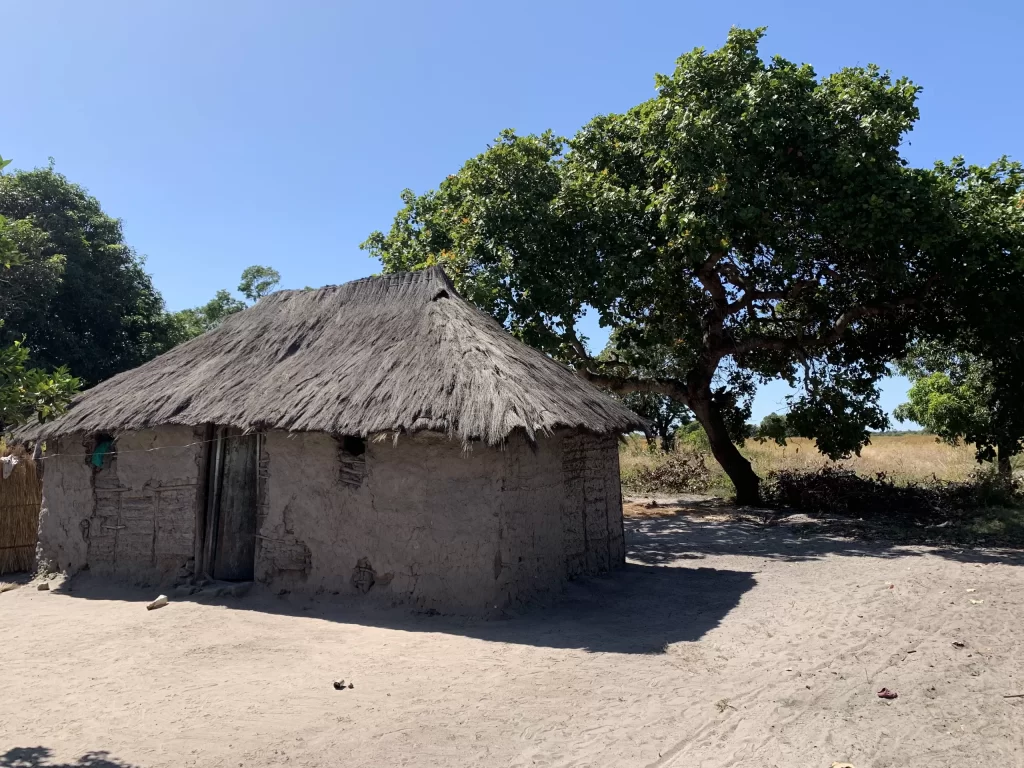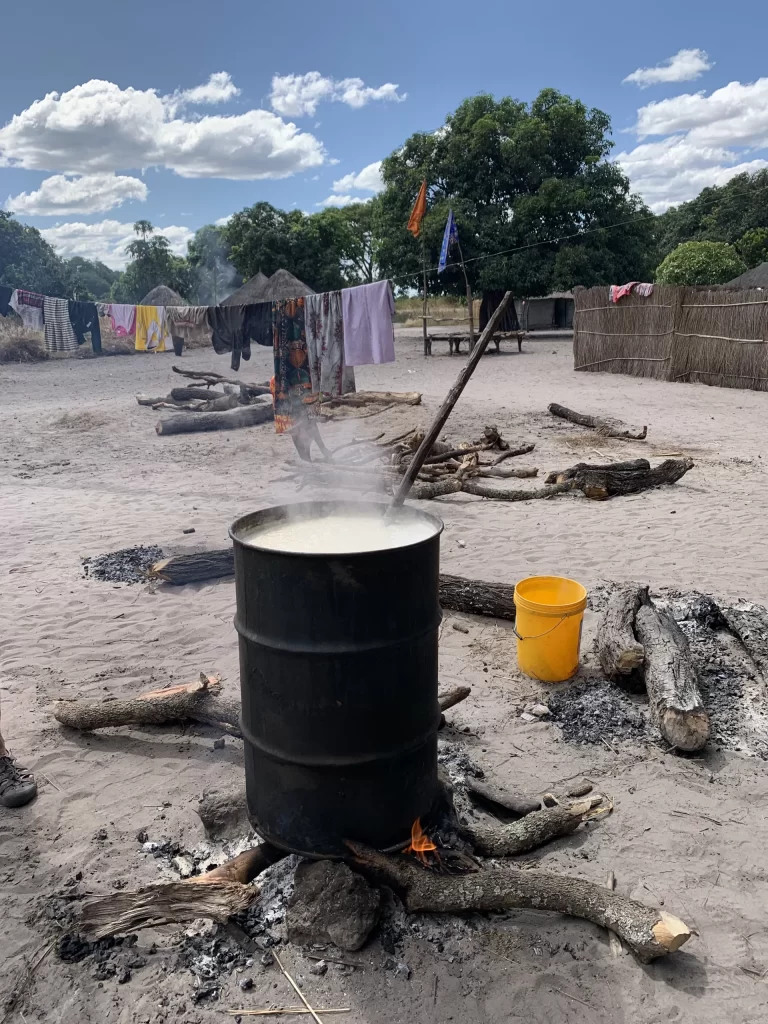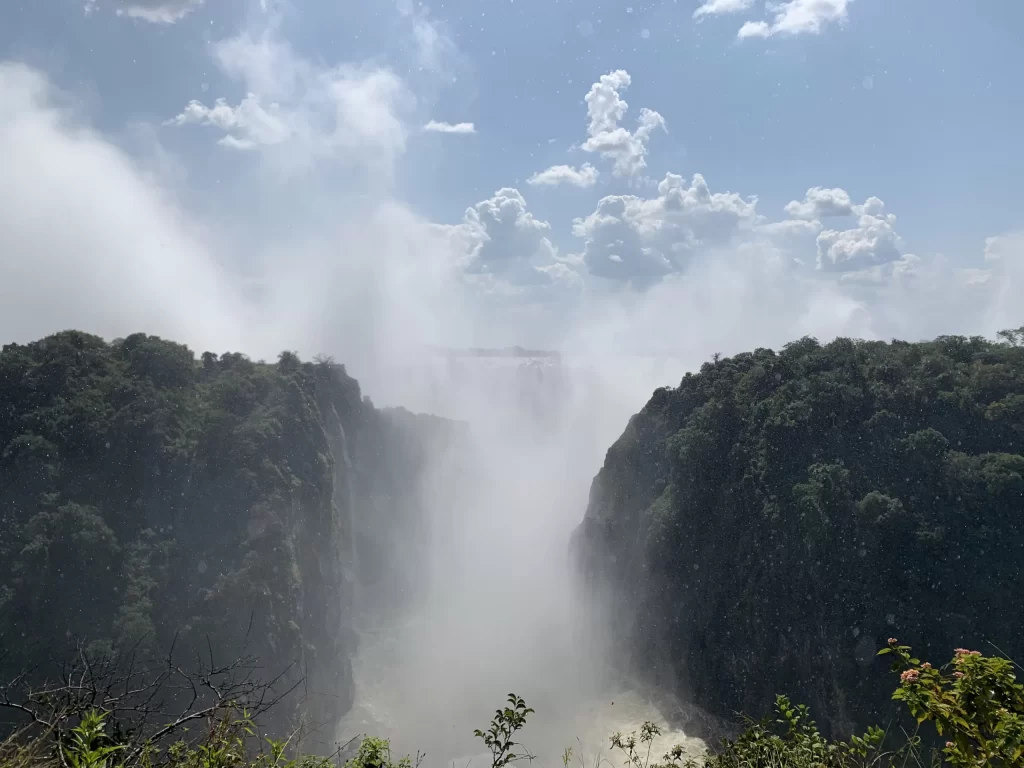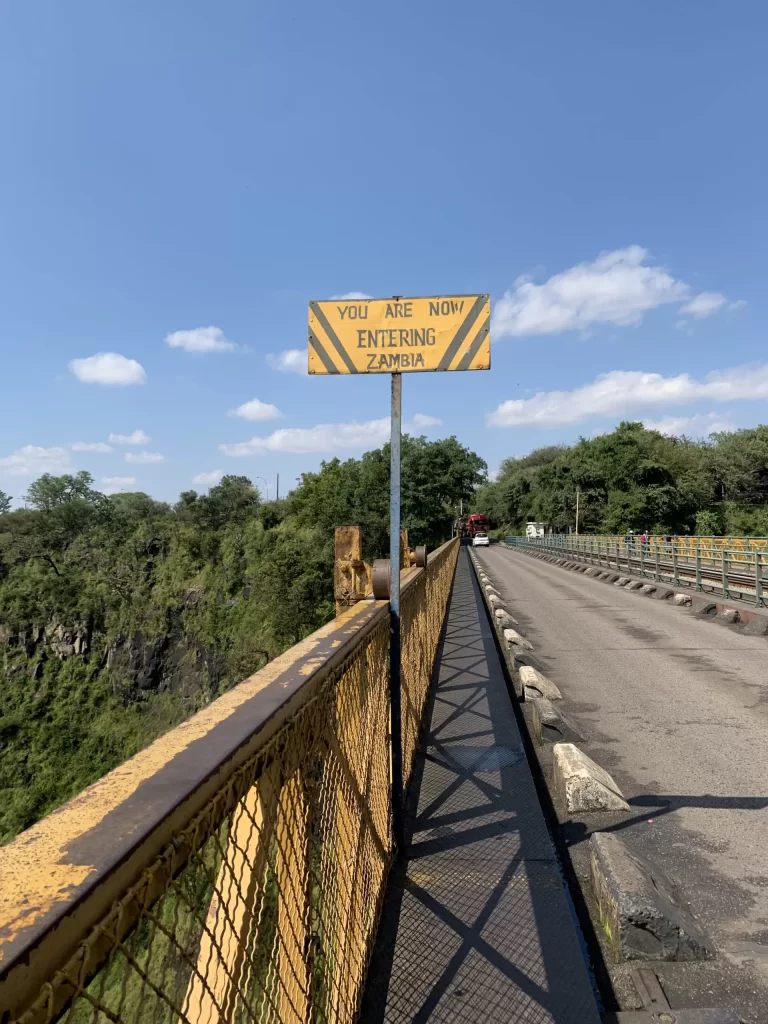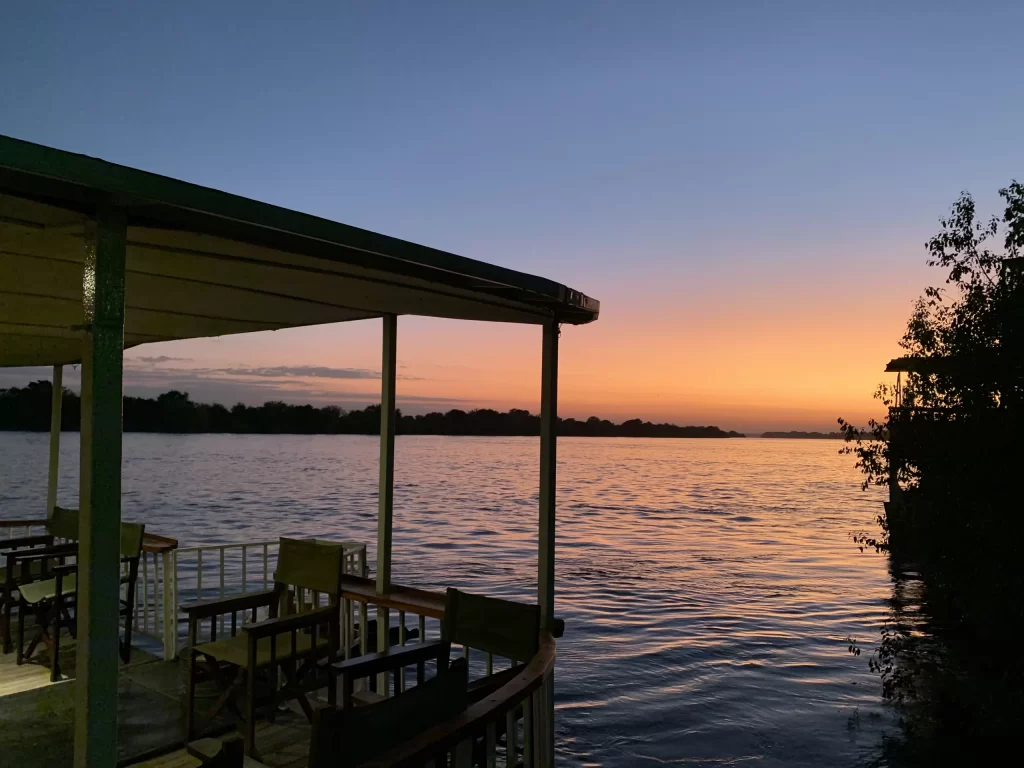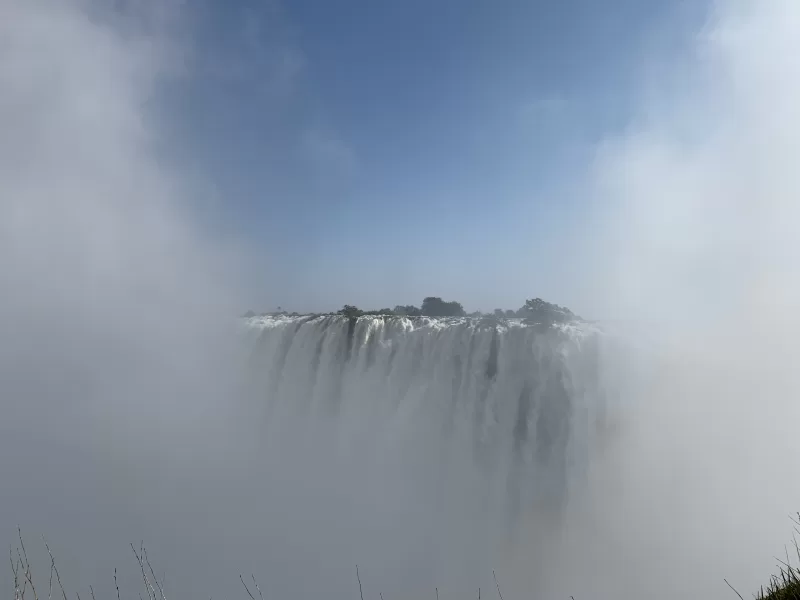I took a journey through Zambia – from the port where the Lozi people set sail on their narrow boats, to the villages where the locals live in a traditional way while learning financial literacy, and to the famous Mosi-oa-Tunya, the “Smoke that Thunders”, as the Lozi people call the renowned Victoria Falls.
When we hear of Zambia, most people immediately think of the falls. But did you know that this sub-Saharan country also harbors one of the largest wetland areas in all of Africa? And that in this area live the Lozi people, one of about 70 Zambian tribes, who migrate to new homes every spring with the onset of floods?
On the outskirts of Mongu, the center of Zambia’s Western Province, we stop at a small port. I walk through the dusty streets where small shops are crammed side by side. Here, you can find everything – from traditional knives to brightly colored dresses made of waxed fabrics, and dried fish, a local specialty. Although I usually like to sample the local cuisine, I pass up this foul-smelling delicacy with a swarm of flies flying over it for now and continue to the place where several ordinary oblong boats are anchored. These are used by the Lozi people to sail to their huts on small islands on the Zambezi River, in a place called the Barotse Floodplain. They bounce off long poles that whirl the surface of the otherwise calm river.

People of two homes
Lozi people have two homes – one they occupy during the dry season, and another to which they move when the Zambezi rises and floods their shelters. Every spring, the Lozi embark on a journey to their new homes. Their move is accompanied by a traditional festival.
“We call it Kuomboka,” twenty-eight-year-old Charity explains the festivities. “As soon as the water level rises, the king of Barotseland, known as Litunga, moves himself and his servants, family and followers from his summer residence in Lealui to his winter palace in the Limulunga area during a three-day festival. His ship is decorated with the symbol of an elephant, the Queen’s ship with a crane. It is a huge event,” continues Charity, who now lives 600 kilometers away in the capital city of Lusaka and prefers to watch the ceremony on TV. The place is usually crowded, and the journey from the capital to her hometown of Mongu in the Western Province takes a whole day: it’s about an eight-hour drive by car, and up to twelve hours by bus.
The Barotse Floodplain is one of the largest wetland areas in all of Africa. In harmony with the Zambezi River cycle, about 250,000 people live here, making a living through fishing and cattle farming for centuries. Due to floods, they inhabit very fertile land. However, their native region of Barotseland, covering the entire present-day Western Province, is one of the poorest areas in Zambia.
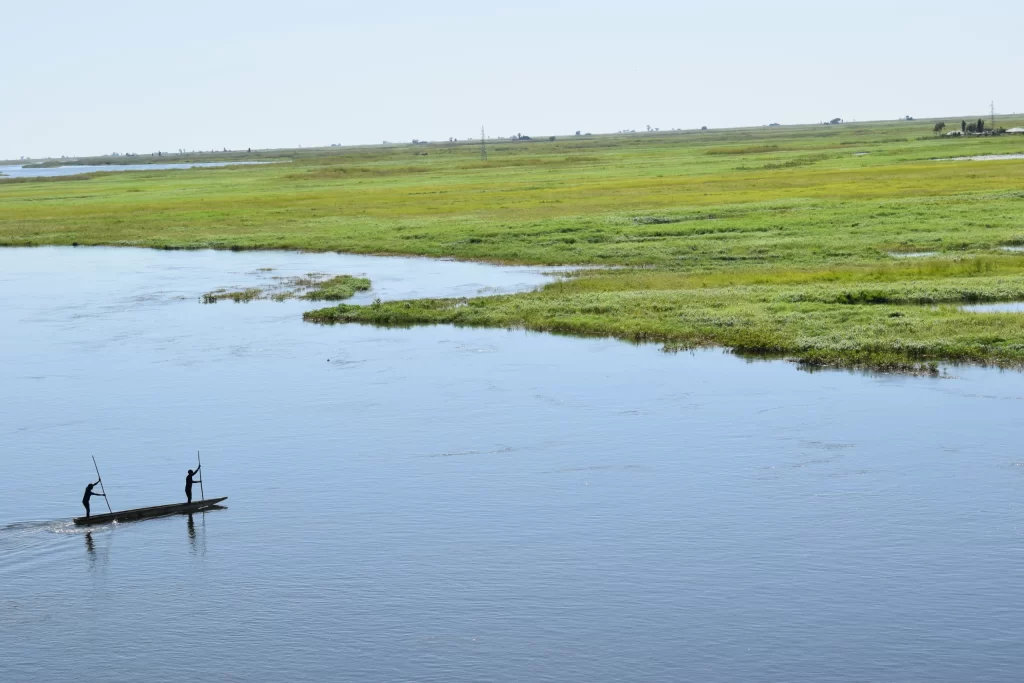
Barotseland
The Kingdom of Baroda or Barotseland, occupying the territories of the Western and Northern Provinces in Zambia, Katanga Province in the Democratic Republic of the Congo and adjacent areas of Angola, Namibia, Botswana and Zimbabwe, was a protectorate under British rule, not a colony like the rest of Zambia, then Northern Rhodesia. It maintained a relatively high degree of autonomy, and even after the creation of independent Zambia in 1964 it negotiated a special agreement to guarantee greater independence. However, Zambian governments did not follow the agreement very closely and instead concentrated development in other Zambian areas, while Barotse lagged behind and continues to lag behind today.
Bank loans in a Zambian village
We continue our journey to the nearby village of Nakato, to meet more people from the Lozi tribe. We drive through the deep sand that is everywhere around the city of Mongu. After a while, several scattered huts appear in front of us, with local women and their children already waiting.
From the village of Nakato, it’s a long walk to the nearest shop. But the villagers are self-sufficient, mostly earning a living through farming, while non-profit organisations help increase their harvest. Forty-year-old Nakena, for example, learned how to plant in rows and how to use fertilizers to grow more at one such training session. “This year I had twice the harvest I had last year, and what we didn’t eat I sold at the market and used it to buy school supplies for the children,” the smiling woman boasts.
Nakena bought her farming tools and seeds thanks to a savings group that was introduced in her village by the NGO Caritas Czech Republic together with the World Food Programme, of which she became a member two years ago. I ask what a savings group mean. “We are ten members and we save money together. Every two weeks, we put 100 Zambian kwacha (about 140 crowns) into a special box, and at the end of the savings cycle we divide the money among ourselves and return it with a small interest,” explains Felisto, who like Nakena is one of the founding members of a savings group named Tamahano, which means Cooperation.
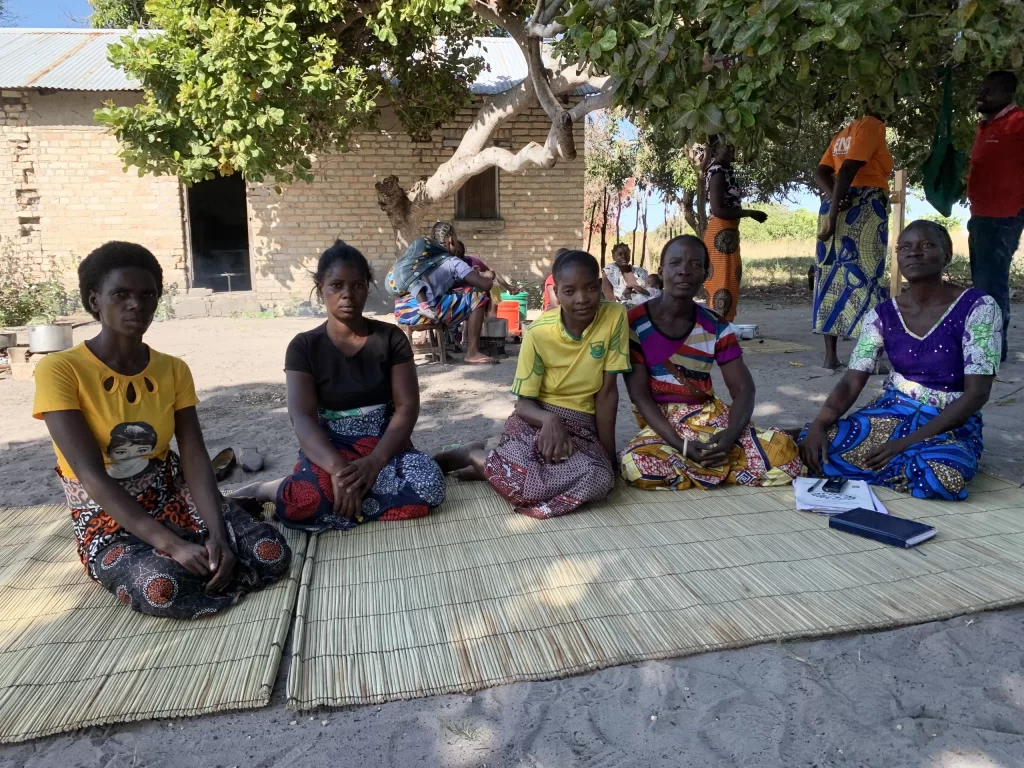
Savings help with children’s education
Felisto says it is difficult, if not impossible, for villagers to get a conventional loan from a bank. So the savings groups help them get what they need. While Felisto plans to use the money she has saved to repair the roof of her house this year, another member, Racheal, wants to invest in farming like Nakena, and the chairwoman, Pumulo, will pay for school uniforms and books for her children to further their education.
We sit on the ground in front of one of the huts, which unlike the other huts in the area is made of bricks. The women show me notebooks in which they record notes from all the meetings of their financial group. I’m curious about how they ensure that no one misappropriates the saved money. “The wooden box we save money in has three locks. Three different members have the key to each lock and the box is kept with a fourth member. It can only be opened using all three keys at once,” explains Felisto, detailing the sophisticated system that allows them to save without worries.
Around us, children run, with the younger ones shyly hiding behind their mothers’ skirts. A little further away, one of the women is rapidly stirring a white substance bubbling in a pot over the fire. “This is nshima,” I learn from the women sitting around. “It’s our traditional dish; we eat it every day.” Nshima is essentially white porridge, created by adding cornmeal to hot water. Regular stirring creates a mass that Zambians add to almost all dishes, traditionally consumed with their hands.
Homemade beer for coming-of-age celebration
From the peaceful silence, interrupted only by the bubbling of nshima and the chatter of children running around, we are interrupted by the sound of drums. We set out to explore it. In a nearby community, just a few dozen meters away, there is a celebration going on. Young boys play drums, women dance, and in a drum near the space between huts, a strange liquid is being brewed, which I later learn is homemade beer. “It has up to 80 percent alcohol,” smiles the already quite drunk man leaning against a tree while talking. Though intoxicated, he manages to explain to us what is happening here. “We are preparing a ceremony for one of our girls who is coming of age. It will start at midnight,” says the man and goes to pour himself another dose of the strong brew.
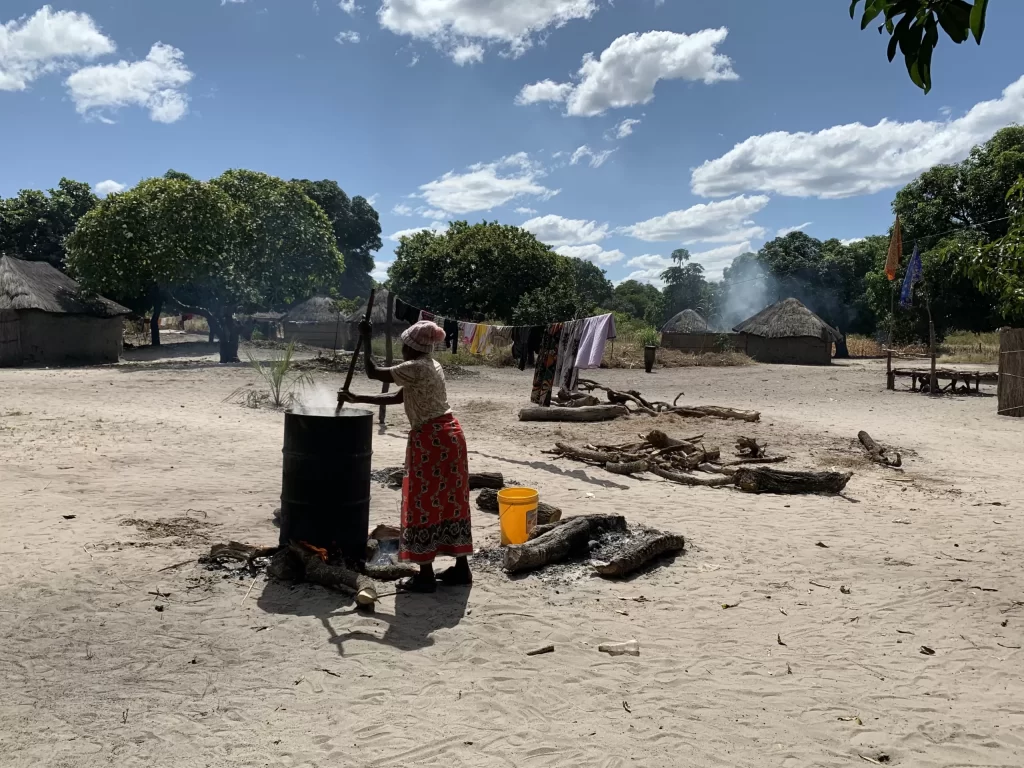
We won’t find out how old the girl is. But we understand that the coming-of-age ceremony is a significant event. In local communities, it is such a big celebration that a man from the city of Livingstone, 500 kilometers away, came to attend it.
As for me, I head in the opposite direction, towards a natural wonder named by the Lozi people – Mosi-oa-Tunya.
Smoke that thunders over Zambia
You can hear it from afar. Rumble. Like a summer storm with constant thunder. You can also see dense smoke. As if it were coming from above a factory. But it’s not a smoke. This is the misty vapor from one of the natural wonders of the world – Victoria Falls. Or Mosi-oa-Tunya, as the falls are called in the original language of the Lozi people. In literal translation, it means Smoke that Thunders. After the first few seconds standing in front of them, I have to say that I could hardly find a better name for them.
Victoria Falls have a charm that photographs and videos cannot capture despite all efforts. The sheer volume of water falling to unprecedented depths. Six million liters of water flow through here every second. At least that was the case in May when I visited the falls. That’s when the water flow is at its strongest. On the other hand, if you were to visit this natural wonder in autumn, you would encounter dry waterfalls. From September, the water level begins to slowly decrease, and by October, the Zambian side is almost completely dry. During this time, however, you can cross the border to Zimbabwe, where the falls continue to flow.
At eight in the morning, the Zambian side of the falls is deserted. Just a few meters from the entrance is the first viewpoint, where no one is present. In front of me is only the falling water of the more than two and a half thousand kilometres long Zambezi River. The mist from the falls rises tens of metres high.
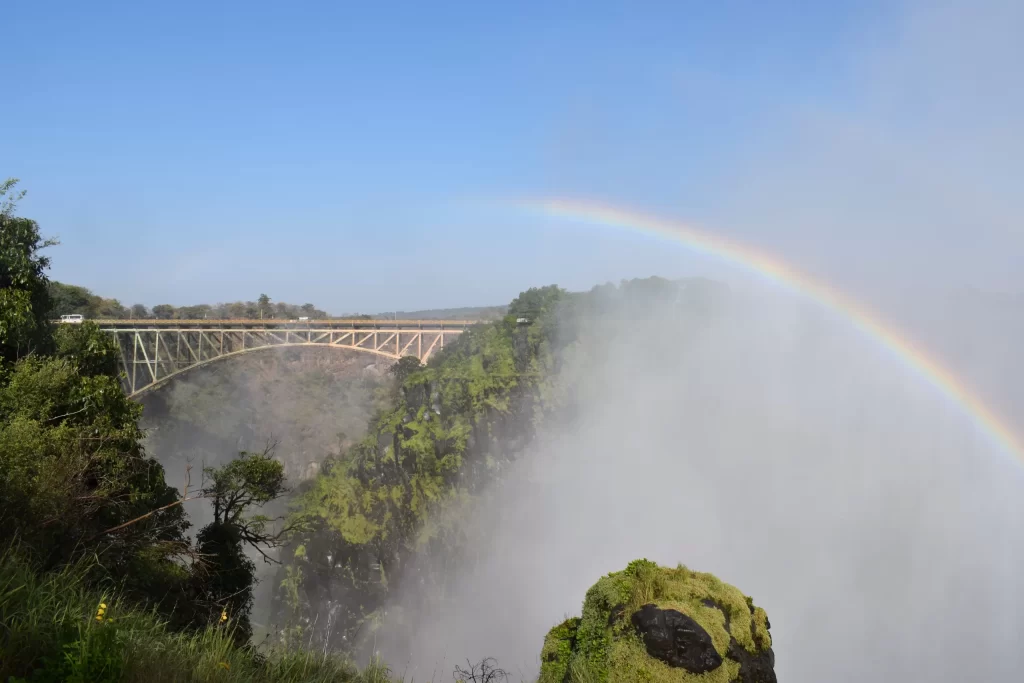
Railway dream
A little further on, a huge rainbow reflects off the falls and crosses an iron bridge leading to neighbouring Zimbabwe. This bridge was built between 1904 and 1905 at the request of the British colonial entrepreneur Cecil Rhodes, who dreamed of connecting Africa by rail – from Cape Town to Cairo. Rhodes never visited the falls and died before the construction of the bridge began. However, he allegedly instructed the engineers to “build a bridge over the Zambezi so that trains passing through would be showered with drops from Victoria Falls.” Although Rhodes’s dream of an uninterrupted rail journey across Africa did not come true, the majestic bridge, still in use today, stands in memory. I set out to explore the falls from the other side.
The journey to Zimbabwe takes less than twenty minutes on foot from Zambia. Special KAZA visas allow me to cross the border between the two countries unlimitedly during my visit. However, on the other side, where the larger part of Victoria Falls is located, I am not lucky with visibility. I spend an hour walking in dense and persistent rain, falling from the natural wonder that I won’t see today. At least I warm up with coffee made from freshly roasted Zimbabwean beans and start my journey back to Zambia.
The most beautiful view of the day opens up to me from the center of the railway bridge. From the gorge, behind which the waterfalls are hidden, a misty haze is drifting down, with only small drops falling on the bridge. It looks like a landscape from Lord of the Rings or another world. I have been standing here for more than half an hour and I am only disturbed from my contemplation by the street vendors, who with their “Hello, sister, I’ll give you a local price” are tirelessly trying to sell at least one of their souvenirs.
